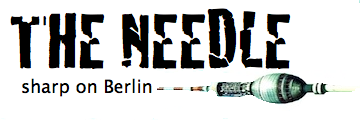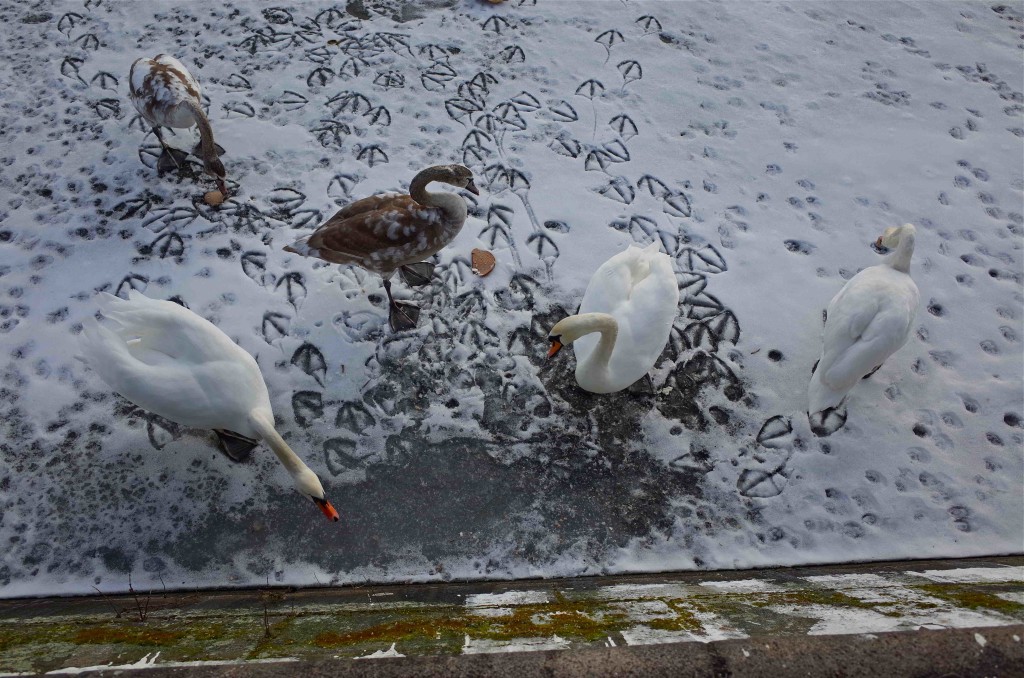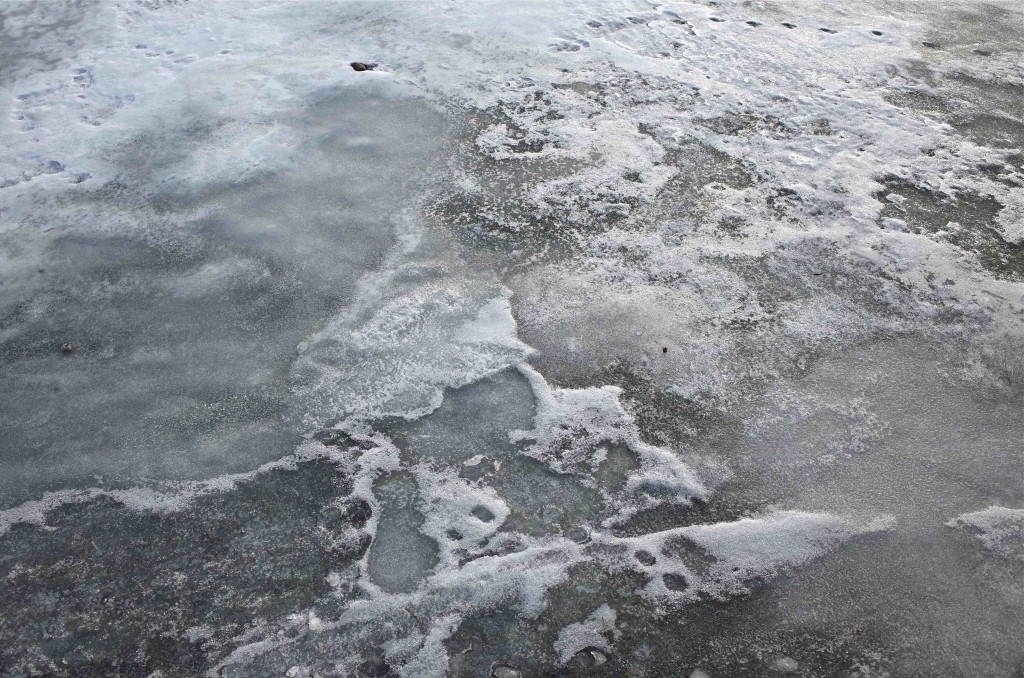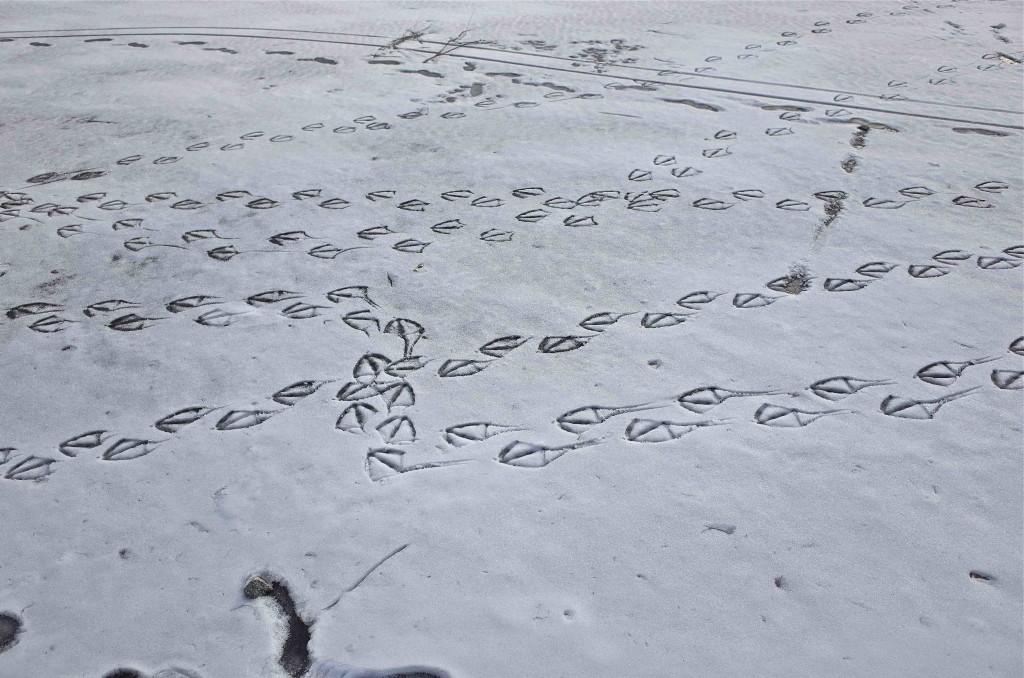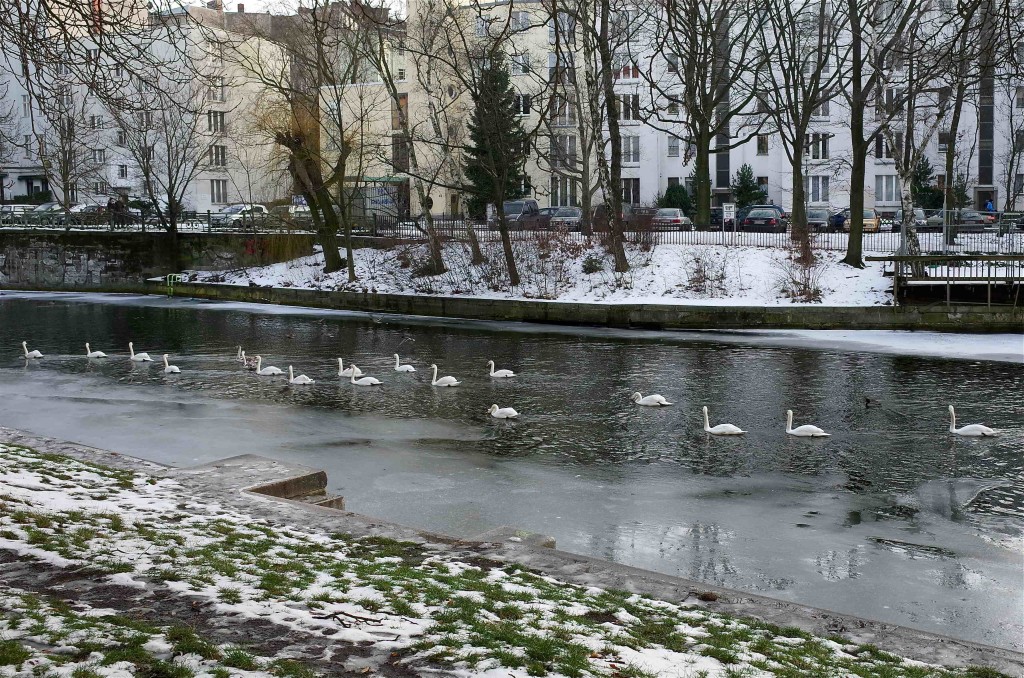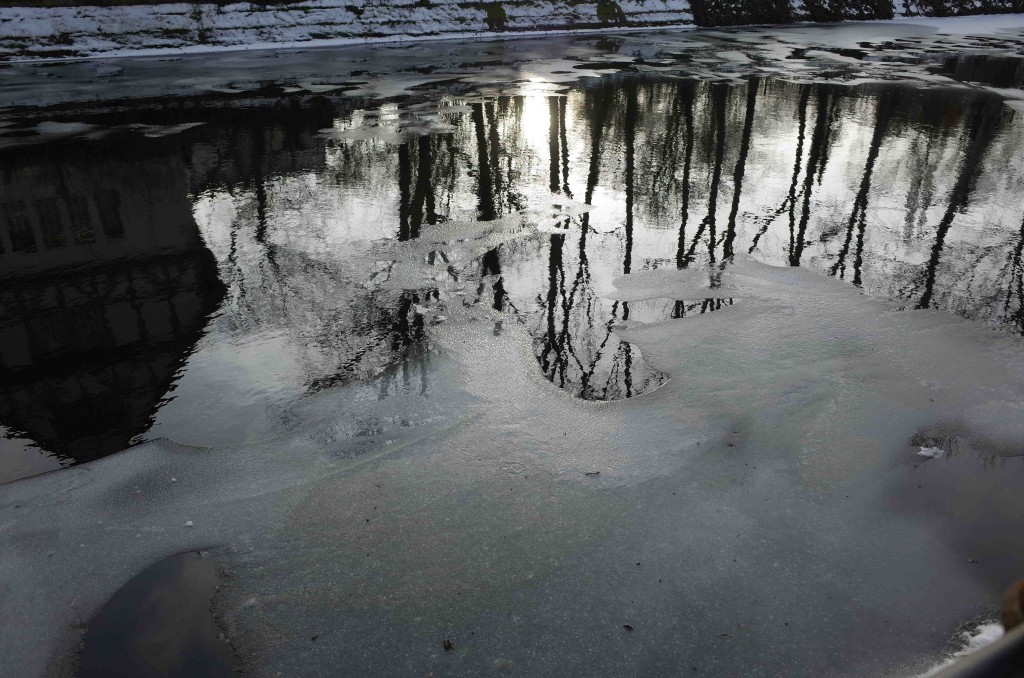Is Spring Coming? and The Attacks on Swans in Berlin
You wake to a blue sky, the temperature rises, and you dare to say Spring is coming. What do the birds think? Already last week, I saw swans walking hesitantly across the ice to the open water.
This blog post is about those birds, and reading it through again I realise just how grim the story is. I don’t want to ruin such a beautiful day, but if you have been following this Berlin tragedy already (not ‘news’ in that it happened today, but ‘news’ in that the story is ongoing) you know what’s coming.
In the past months there have been a number of disheartening attacks on Berlin’s swans. Winter ice regularly threatens them with starvation, but human attacks have been even more horrifying. Two months ago, the Berlin police opened an investigation of attacks against swans in public parks after, in Tempelhof-Schoeneberg, numerous swans were beaten to death, found wrung from the neck, their spines broken. This follows on incidents, one year before, in December 2012, when two swans were found wounded in Kreuzberg between Kottbusser Brücke and Urbanhafen. Farther along, towards Potsdamer Platz, a swan cadaver was found headless floating in the water. PETA warns that people who torture animals are more much more likely to commit violent crimes against humans––yet another reason to feel wary about what’s been happening to this elegant animals in Berlin’s parks and waterways.
James and I were walking along the Landwehrkanal in Kreuzberg last week, where some of the attacks occurred. The macabre news, and still frosty weather, gets us talking about Mallarmé, and swans who find themselves frozen in the ice.
Tout son col secouera cette blanche agonie / Par l’espace infligée à l’oiseau qui nie, / Mais non l’horreur du sol ou le plumage est pris.
All his neck will shake off this white death-agony/ Inflicted by space on the bird which denies space / But not the horror of the earth where his wings are caught.*
It seems impossible that they should freeze this way. But I read later how it is.
We walk further. The canal is melting. The swans are remarkably agile on the thin ice. Their kite-like footprints crisscross in the snow. The delicacy with which they touch the ice seems so unlikely for such bold bodies. Then again, their firm volumes seem so weightless. How delicate are they? How sensitive? Swans also attack humans. Then, I think how every New Year’s eve, looking over to the canal from a bridge at midnight, I notice the flurry of wings over the water as the firecrackers illuminate them from overhead. They look terrified, then they huddle together for protection.
The ice is now breaking and they are floating into the open water. I look superstitiously for meanings in this departure. I wonder again if it means spring will come soon, whether we will be rescued from the cold weather. I wonder whether, when the ice melts, we will be faced with new horrors, whether the police will find more corpses. I wonder whether they will find the criminals. But along this beautiful canal, the recent disturbing news seems distant and unreal.
For now, all is rendered uncanny with the quiet movements of ice, birds, and water.
* Stephane Mallarmé, ‘Le Cygne’ (1885), trans. Wallace Fowlie (1953).
